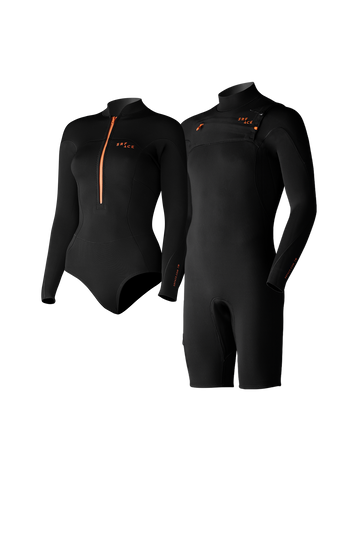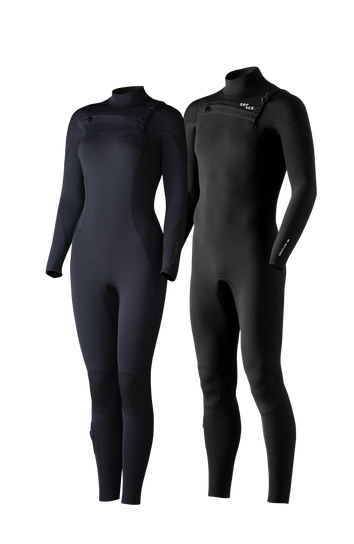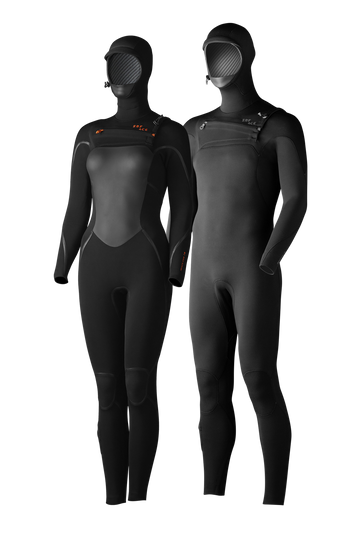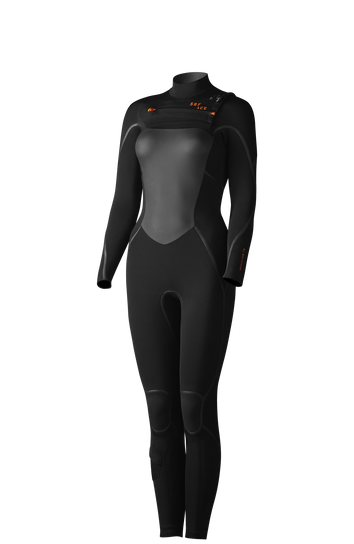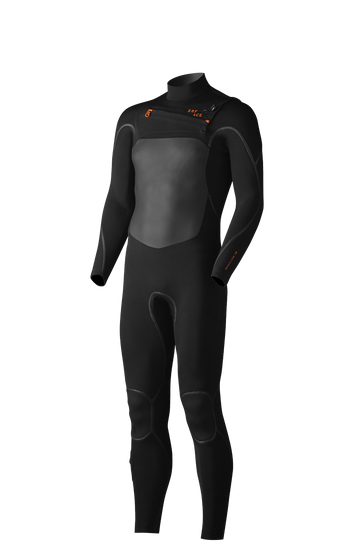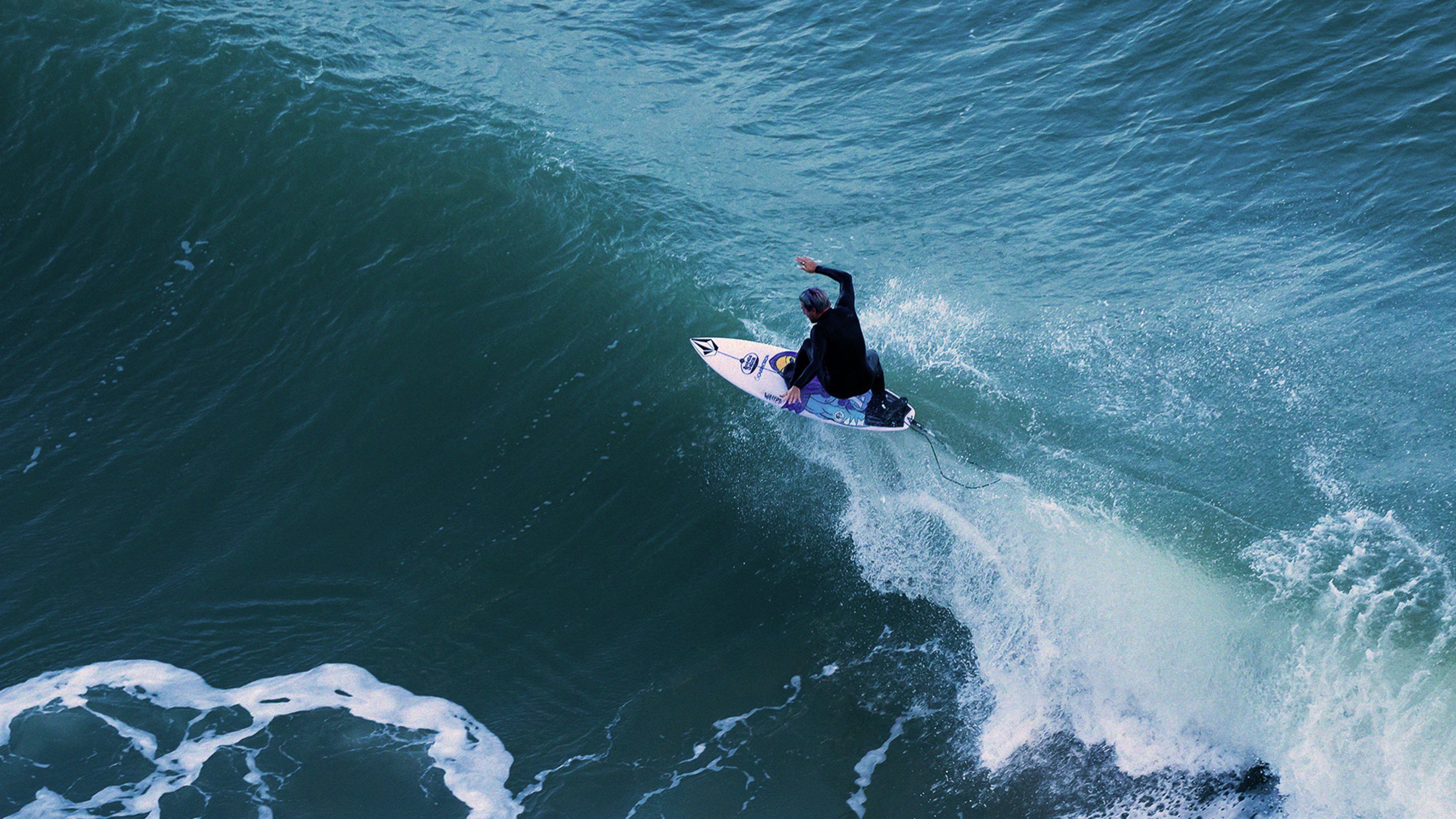
WETSUIT SEAMS
Seams simply connect two or more wetsuit panels with thread. To create a waterproof seal, different panels will be usually also glued together. It’s common to blind stitch wetsuits with a needle that doesn’t penetrate the neoprene completely. This prevents water leaks. We can reinforce seams even more by adding a liquid rubber seal and neoprene tape inside taping on more high-end wetsuits. More cost-effective types of seams are flatlock or overlock stitching. These seam types aren’t glued, and won’t be waterproof. That’s why you’ll find flatlock mostly on summer wetsuits and shorties used in warm waters.
Featured wetsuits
 GBS (GLUED AND BLIND STITCHED)
GBS (GLUED AND BLIND STITCHED)
Glued and blind stitched seams are the most common seam construction for cold water wetsuits. This seam construction prevents water from entering your wetsuit. Firstly, we create GBS seams by gluing the edges of the neoprene panels together. Usually, we’ll do this three times, creating triple glued seams. Secondly, we blind stitch the seams together. Most importantly, blind stitching offers additional strength. The needle doesn’t penetrate the neoprene completely, but only stitches through half of the neoprene panel to prevent leakage. We can cover GBS seams with a liquid neoprene seal on the outside and/or neoprene taping on the inside for extra seam reinforcement. The strongest blind stitch seam, only used without seal, is a double thread blind stitch. This seam has double the amount of threads, making the seam extremely strong. Other stitching techniques for wetsuit seams are flatlock, overlock, e-stitch, double-needle, zigzag stitching, and many more.
 LIQUID SEALED SEAMS
LIQUID SEALED SEAMS
To reinforce a traditional glued and blind stitched seam, we can apply a seal on top of the stitching to create a sealed outside seam, mainly used on high-end wetsuits. The liquid rubber seal gives the sea an extra layer of protection from water entering the wetsuit. It’s a more durable construction that lasts longer than normal GBS (glued and blind stitched) seams. The technical name for this seam construction is S-seal. Although not as good looking, S-seal is found to be more durable than powerseams.
Choose your wetsuit
POWERSEAMS
Powerseams are a narrower version of a liquid neoprene seam without blind stitching on the outside. Usually, powerseams have blind stitching on the inside of the wetsuit or are completely stitchless. Powerseams come in a variety of colours. They’re found to be less durable than s-seal or liquid rubber seals.
 TAPED INSIDE SEAMS
TAPED INSIDE SEAMS
Some high-end wetsuits feature an even more durable seam construction by reinforcing the inside of the GBS or sealed seams by applying neoprene tape. Neotape inside seams make the seam even more waterproof by forming an extra layer of protection against water leaks. It also protects against seam irritation to the skin. We can apply neoprene tape with normal glue, which can leave some glue residue visible on the tape’s edge. A neater way with better protection against skin rash is Neotape 2.0 or New neotape. We machine heat-weld the neotape 2.0 onto the fabric using a hot melt glue layer, instead of applying it by hand using the traditional method of brush on glue.
 FLATLOCK SEAMS
FLATLOCK SEAMS
A much more cost-effective way to make wetsuits is by using flatlock seams. You’ll find a lot of warm water summer wetsuits, such as shorties or other wetsuits under 2.5mm thickness, with flatlock seams. Flatlock seam are not glued and are not waterproof. During manufacturing the sewing machine needle penetrates both overlapping neoprene panels at the seam to create the most affordable seam construction available for wetsuits. It’s not possible to use flatlock stitching in winter wetsuits, as it lets water through and won’t protect against cold. It’s possible to reduce the price of a wetsuit even more by using overlock stitching. However, it’s rare to find wetsuits with overlock seams. You might encounter this technique more often on rashguards or other lycra products.
 INSIDE SEAM JOINT REINFORCEMENTS
INSIDE SEAM JOINT REINFORCEMENTS
Wetsuits get a lot of abuse from wear during surfing, and especially from putting on and taking off your wetsuit. To prevent over stretching and damage to the seam joints and stress areas, we can apply a reinforcement patch on the inside to strengthen these fragile areas. These so-called Melco dots are a Japanese reinforcement material that is heat welded on to make a wetsuit last longer. Melco dots prevent over stretching, which can lead to tearing the wetsuit. It can be used as heat welded tape or heat welded patches or dots. These patches are usually found on the inside of the wetsuit where multiple seams meet in one place. Or where less flexible material is stitched to a more flexible material to create an even stress release area.

Ready to surf?
Shop from €159



